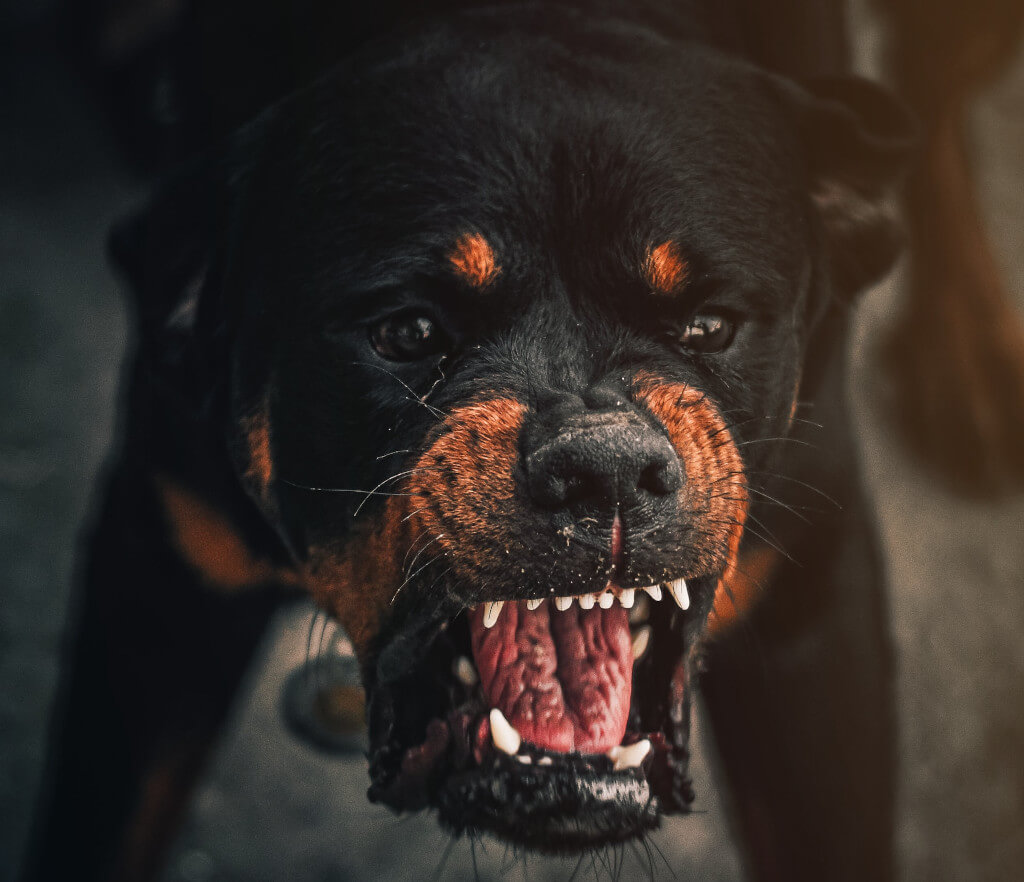To avoid being bitten by a dog and to increase the likelihood that a potentially dangerous encounter with a dog will result in a positive outcome, it is essential to comprehend the behavior of dogs and to be acquainted with the red flags that they display.
The majority of dog bites are the result of an attempt to interact with or actual interaction with a dog, such as playing with, restricting, petting, or otherwise handling the dog. Many dog bites occur with dogs that are already known to the victim. If you aren’t paying close attention to the red flags or do not understand dog language, your once friendly family dog may rapidly turn confrontational because you were unable to comprehend what they were trying to tell you. This could be avoided by paying attention to the warning signs and learning dog language.
The following list of twelve warning signs that a dog exhibits before biting a person could determine whether or not that person is bitten.
A Tense Physical Demeanor
The dogs appear rigid or tense, with their ears pulled back, tails tucked between their legs, and lips squeezed together tightly. These behaviors point to fear, and if they are exacerbated, he may bite.
Dominating Mannerisms
In this scenario, he might give off the impression of being tense and puffed up, with his lips pushed together and his tail and ears elevated. He is going to look directly at you. This behavior indicates dominance or intimidation, and a readiness to engage in combat.
Stalking Behaviour patterns
It is not a positive indication when a dog follows you around with his head hung low, his body rigid, and gazes intently at you the whole time. Some dogs will exhibit this behavior when they are playing, which can be distinguished from their typical demeanor by the relaxed posture and playful bow that they will adopt. If the dog isn’t being playful but is following you around, this is almost always a sign that it is engaging in predatory behavior, which could result in a bite.
Growling at You
When a dog is growling at you for no obvious cause, such as during a match of tug of war, it is safe to presume that the dog is ready to bite, unless you’re told otherwise by the dog’s owner or by someone who is familiar with the dog’s behavior and is knowledgeable about him.
Exhibiting a Raise in the Lip and Teeth
When a dog shows signs of aggression, such as raising his lip and baring his teeth, it is typically too late to stop the situation. Unless, of course, he’s an Australian Shepherd who just smiles all the time because he’s content.
Angry and Anxious Behavior, as well as Intense Glaring
There are some dog breeds, such as border collies, that have the propensity to stare; however, the majority of the time, the staring is not followed by tense behaviors on the part of the dog. It is usually a warning sign of aggression.
Acts Motivated by Fear
It is in your best interest to avoid chasing after a dog that is actively attempting to escape from you. Dogs that are terrified of their surroundings will at first make an effort to escape, but they will bite if they feel trapped or in any way threatened. Unless you are a qualified professional in animal behavior, you should never pursue a fearful dog to encourage interaction with it; instead, you should always use motivation to win the dog’s trust.
Coming Closer to a Dog While It Is Eating
It is in everyone’s best interest to refrain from disturbing dogs while they are busy eating or chewing on bones. Teach your children to avoid approaching him unless he has finished eating or is done gnawing on their bone.
Mating
It is better not to intrude when male dogs are copulating or trying to mate with female dogs when the female is in her heat.
Guarding the Frontiers of His Domain
A dog can become hostile toward you if you are approaching his yard or home while the dog’s owner is absent and the dog does not recognize you. If the dog is known to become confrontational toward people they do not know, you should either ask the dog’s owner if they are home at the time of your visit or ask them to crate the dog or restrict him to another area while you are there.
Putting Obstacles in His Path to Obtain Something He Likes
Dogs will bite you if you try to stop a fight between two other dogs or if you get in the way of something the dog is trying to get.
Employing Instructional Strategies That Are Not Appropriate
If you do something to a dog, like tackle him, that causes him to feel insecure or protective, the dog will fight back and act defensively in response to what you did.
Conclusion
We have high hopes that you have found our article on the 12 red flags before a dog bites to be enlightening, and that you’ll keep these signs in mind any time you are around dogs. It is essential, in order to know how to avoid being bitten by a dog, to be aware of the reasons why dogs bite and the signs that appear before a bite.

